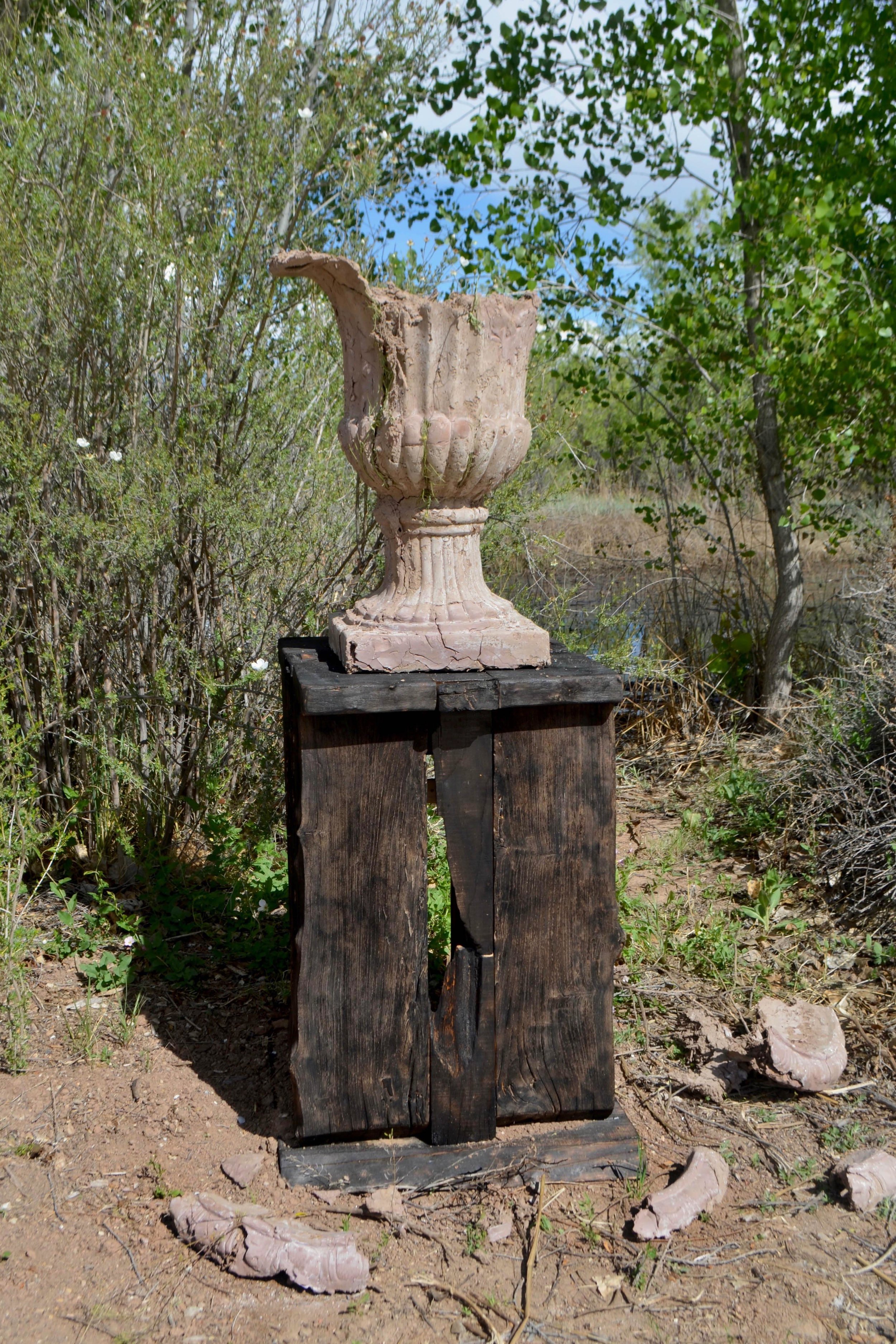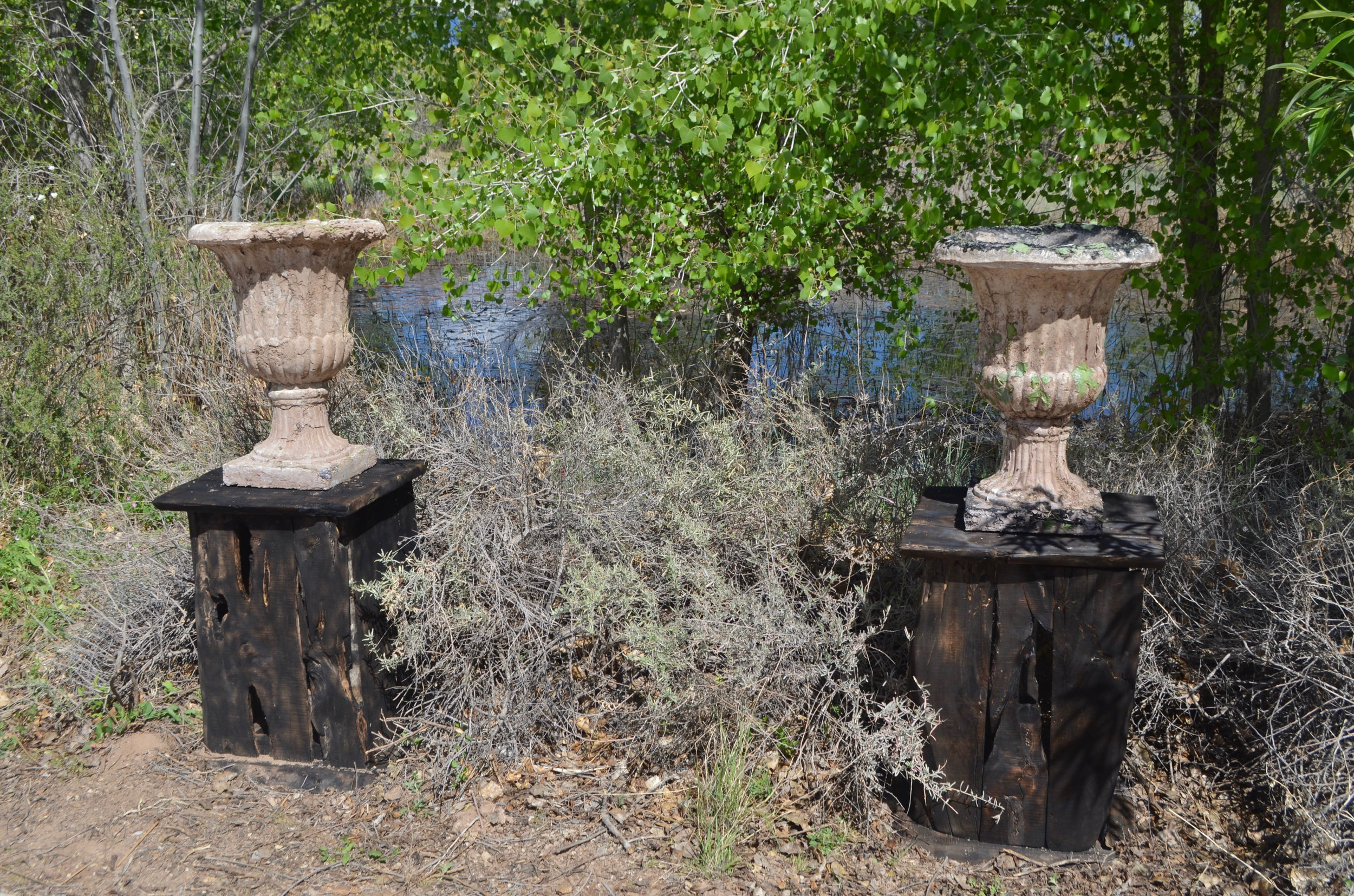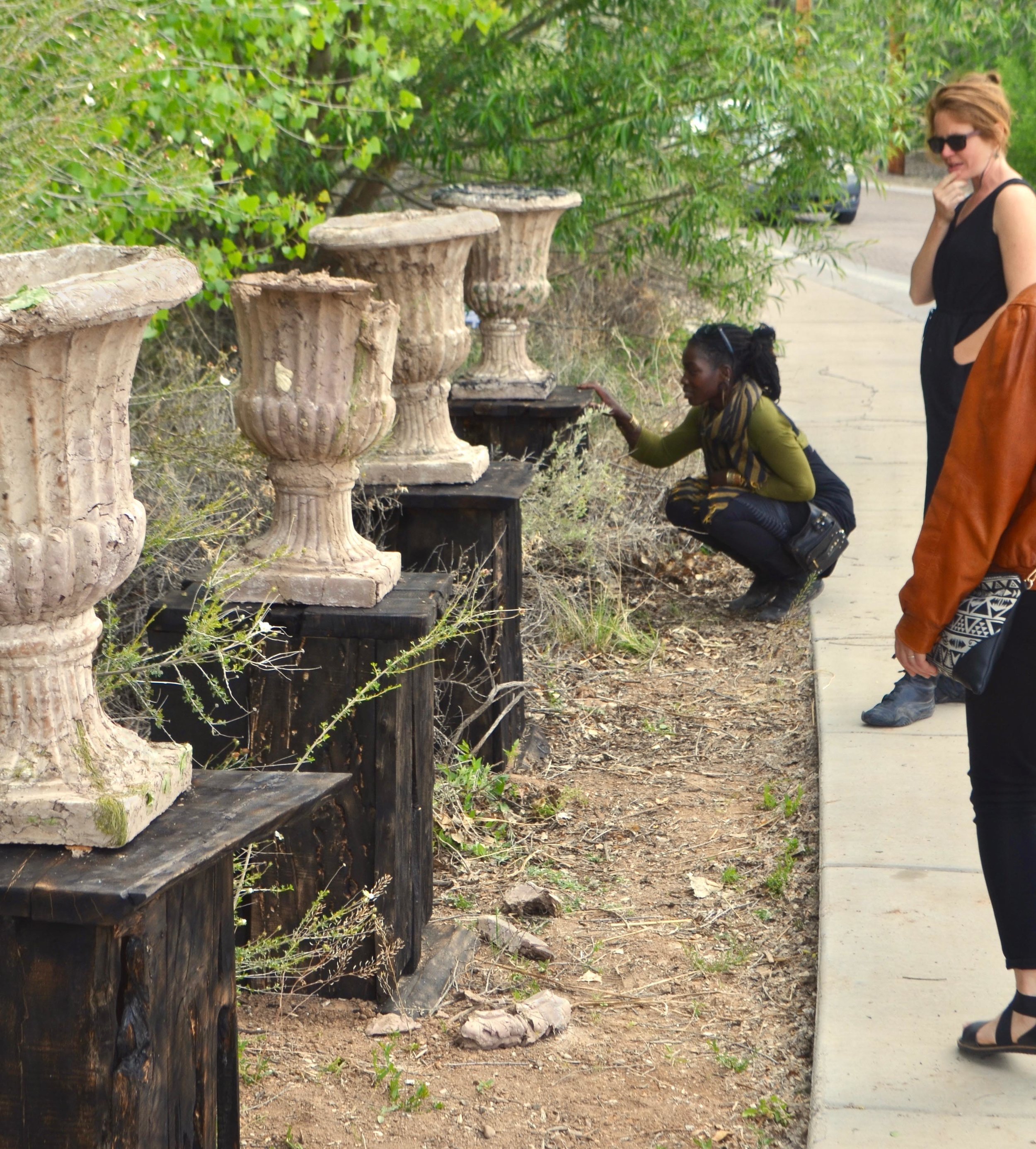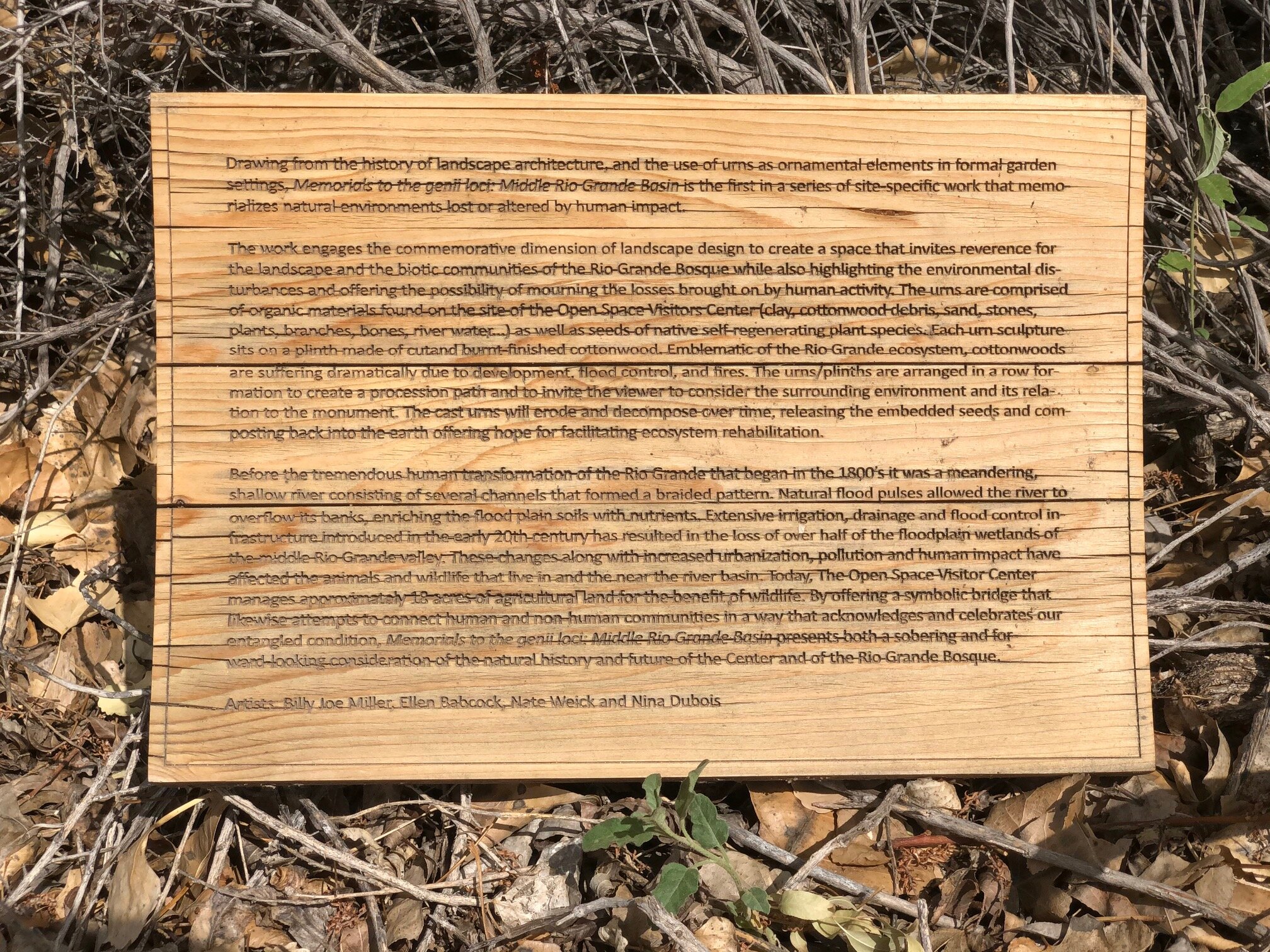
BJM collaboration with Ellen Babcock, Nathan Weick and Nina Dubois.

Drawing from the history of landscape architecture, and the use of urns as ornamental elements in formal garden settings, Memorials to the genii loci: Middle Rio Grande Basin is the first in a series of site-specific work that memorializes natural environments lost or altered by human impact. The work engages the commemorative dimension of landscape design to create a space that invites reverence for the landscape and the biotic communities of the Rio Grande Bosque while also highlighting the environmental disturbances and offering the possibility of mourning the losses brought on by human activity. The urns are comprised of organic materials found on the site of the Open Space Visitors Center (clay, cottonwood debris, sand, stones, plants, branches, bones, river water...) as well as seeds of native self-regenerating plant species.

Each urn sculpture sits on a plinth made of cut and burnt-finished cottonwood. Emblematic of the Rio Grande ecosystem, cottonwoods are suffering dramatically due to development, flood control, and fires. The urns/plinths are arranged in a row formation to create a procession path and to invite the viewer to consider the surrounding environment and its relation to the monument. The cast urns will erode and decompose over time, releasing the embedded seeds and composting back into the earth offering hope for facilitating ecosystem rehabilitation. Before the tremendous human transformation of the Rio Grande that began in the 1800’s it was a meandering, shallow river consisting of several channels that formed a braided pattern. Natural flood pulses allowed the river to overflow its banks, enriching the flood plain soils with nutrients.

Extensive irrigation, drainage and flood control infrastructure introduced in the early 20th century has resulted in the loss of over half of the floodplain wetlands of the middle Rio Grande valley. These changes along with increased urbanization, pollution and human impact have affected the animals and wildlife that live in and the near the river basin. Today, The Open Space Visitor Center manages approximately 18 acres of agricultural land for the benefit of wildlife. By offering a symbolic bridge that likewise attempts to connect human and non-human communities in a way that acknowledges and celebrates our entangled condition, Memorials to the genii loci: Middle Rio Grande Basin presents both a sobering and forward-looking consideration of the natural history and future of the Center and of the Rio Grande Bosque.




























BJM collaboration with Ellen Babcock, Nathan Weick and Nina Dubois.
Drawing from the history of landscape architecture, and the use of urns as ornamental elements in formal garden settings, Memorials to the genii loci: Middle Rio Grande Basin is the first in a series of site-specific work that memorializes natural environments lost or altered by human impact. The work engages the commemorative dimension of landscape design to create a space that invites reverence for the landscape and the biotic communities of the Rio Grande Bosque while also highlighting the environmental disturbances and offering the possibility of mourning the losses brought on by human activity. The urns are comprised of organic materials found on the site of the Open Space Visitors Center (clay, cottonwood debris, sand, stones, plants, branches, bones, river water...) as well as seeds of native self-regenerating plant species.
Each urn sculpture sits on a plinth made of cut and burnt-finished cottonwood. Emblematic of the Rio Grande ecosystem, cottonwoods are suffering dramatically due to development, flood control, and fires. The urns/plinths are arranged in a row formation to create a procession path and to invite the viewer to consider the surrounding environment and its relation to the monument. The cast urns will erode and decompose over time, releasing the embedded seeds and composting back into the earth offering hope for facilitating ecosystem rehabilitation. Before the tremendous human transformation of the Rio Grande that began in the 1800’s it was a meandering, shallow river consisting of several channels that formed a braided pattern. Natural flood pulses allowed the river to overflow its banks, enriching the flood plain soils with nutrients.
Extensive irrigation, drainage and flood control infrastructure introduced in the early 20th century has resulted in the loss of over half of the floodplain wetlands of the middle Rio Grande valley. These changes along with increased urbanization, pollution and human impact have affected the animals and wildlife that live in and the near the river basin. Today, The Open Space Visitor Center manages approximately 18 acres of agricultural land for the benefit of wildlife. By offering a symbolic bridge that likewise attempts to connect human and non-human communities in a way that acknowledges and celebrates our entangled condition, Memorials to the genii loci: Middle Rio Grande Basin presents both a sobering and forward-looking consideration of the natural history and future of the Center and of the Rio Grande Bosque.